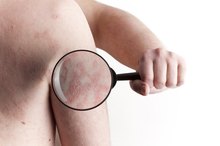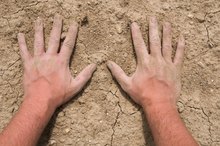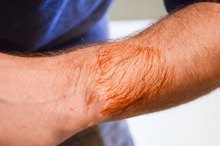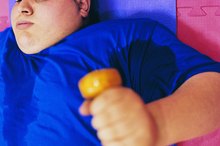What Is Skin Occlusion?
Skin occlusion occurs when something, usually a topical medication, is trapped on and, as a result, gets absorbed by your skin. If you have ever applied an antibacterial ointment to a cut, then covered that cut with a bandage, you have used skin occlusion to prevent infection and speed the healing process. But because this absorption of chemicals through your skin is a natural process, you need to treat it with caution; it is possible to absorb harmful chemicals through your skin as well as helpful remedies.
Permeability
Skin occlusion is an effective means of absorbing ointments and medication because it leaves your skin hydrated. If you leave a patch on your skin, the moisture from your body has nowhere to go, trapping in extra hydration. This excess hydration makes it easier for the chemicals or medicines to permeate your skin.
Location
Can You Restore the Pigment to White Spots on the Skin?
Learn More
Location makes a difference in the effectiveness of skin occlusion. Areas of your body with thicker skin will require more time for your body to absorb whatever you are occluding. Areas of your body with thinner or more sensitive skin will absorb chemicals and medications at a faster rate.
Drug Delivery
Several companies have made use of the skin’s power of absorption, creating patches that deliver the same effects as other products. The two best-known drug delivery forms of skin occlusion are the nicotine patch and the birth control patch. Other drugs delivered through skin occlusion include testosterone, physostigmine, scopolamine and fentanyl.
Occlusive Therapy
What Is Ammonium Lactate Lotion?
Learn More
Occlusive therapy is an extended form of skin occlusion, one that creates prolonged skin occlusion to select parts of your skin 2. If you have eczema on your hand, for instance, you would soak your hand for 15 to 20 minutes, apply your normal medication, cover the area affected by eczema with plastic, seal that plastic with an elastic bandage and leave your hand wrapped as such for approximately six hours. Such therapy is designed to help manage skin conditions such as psoriasis, eczema and dermatitis.
Unintended Occlusion
You should be aware of and try to avoid unintended skin occlusion when dealing with potentially harmful chemicals. For instance, insect repellent should only be applied to bare skin or clothing; if you apply insect repellent to an area of your skin that will be covered by clothing, your skin will absorb more of the repellent’s toxins, potentially triggering unintended side effects from the product.
Related Articles
References
- DermaTalk: Occlusive Therapy for Chronic Skin Disorders
- Dermatology Online Journal: A Review of the Effect of Occlusive Dressings on Lamellar Bodies in the Stratum Corneum and Relevance to Transdermal Absorption
- MedlinePlus. Cutaneous skin tag. July 11, 2019.
- American Academy of Dermatology. 5 reasons to see a dermatologist for mole, skin tag removal.
- Medical News Today. How to get rid of skin tags: 8 natural home remedies. Jan 4, 2020.
- UW School of Medicine and Public Health. Removing moles and skin tags.
Writer Bio
Katie Strzeszewski has been writing professionally since 2003 and holds a Bachelor of Arts in professional writing and English secondary education from York College of Pennsylvania. Strzeszewski spent two years performing computer repair for Geek Squad, currently works for men's clothier Paul Fredrick and is also a competitive West Coast Swing and Hustle dancer.









